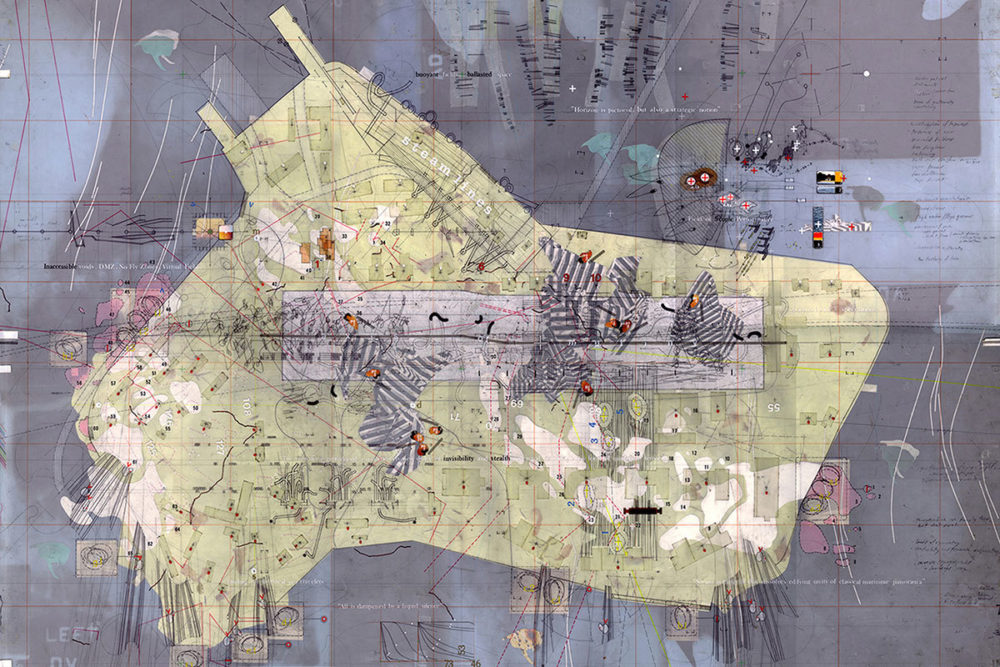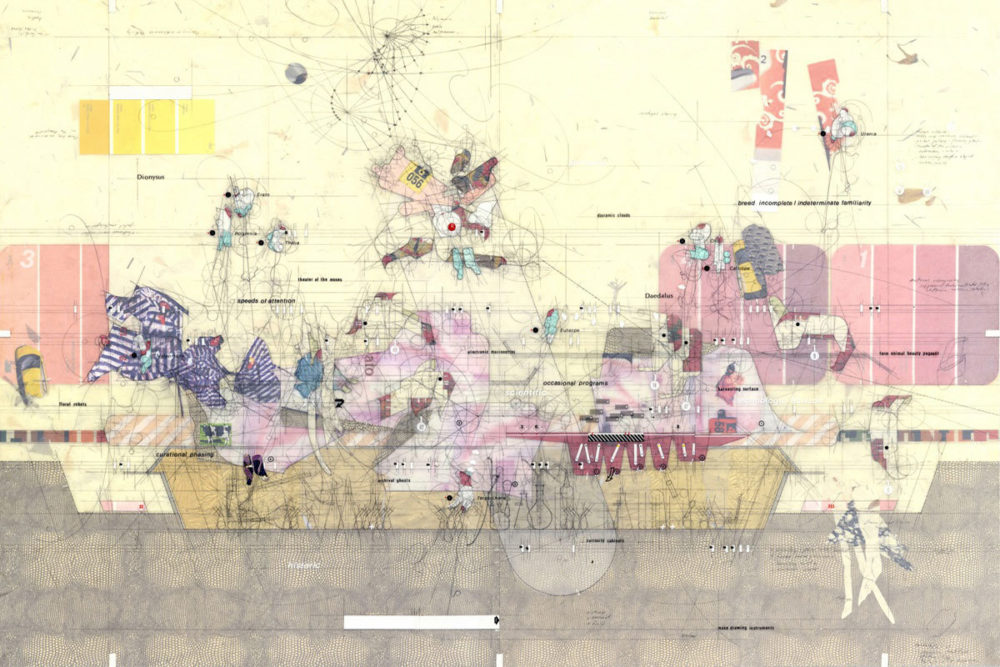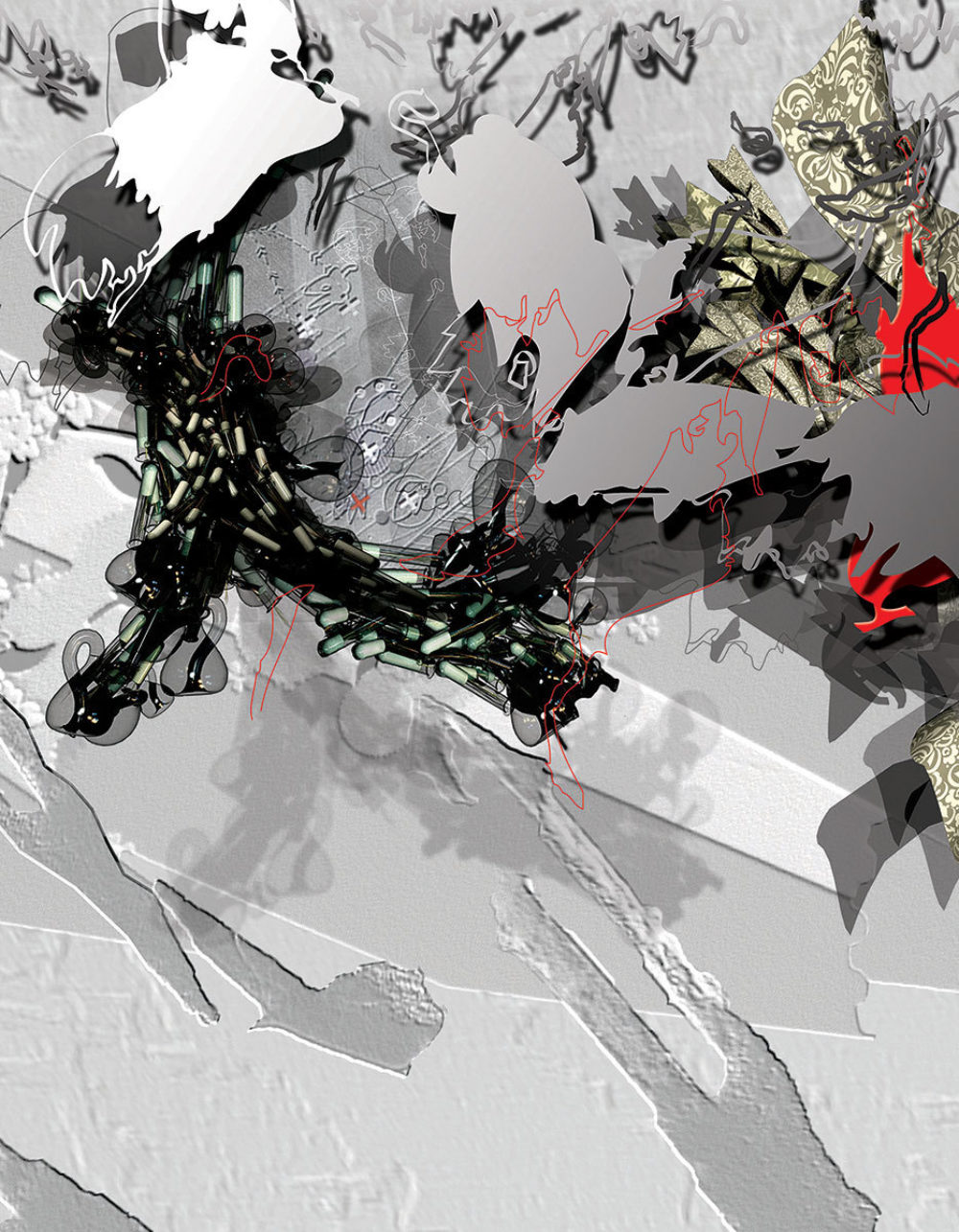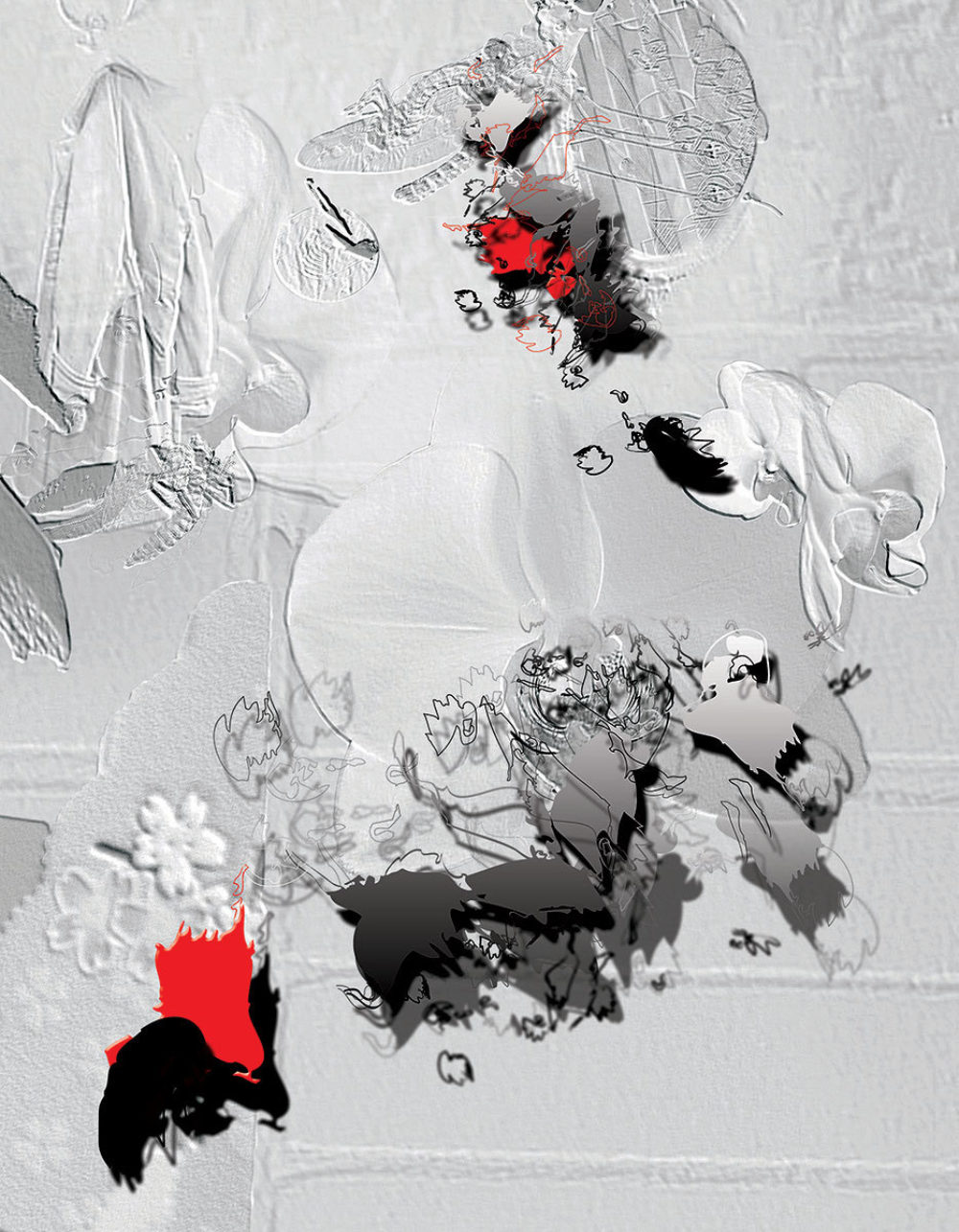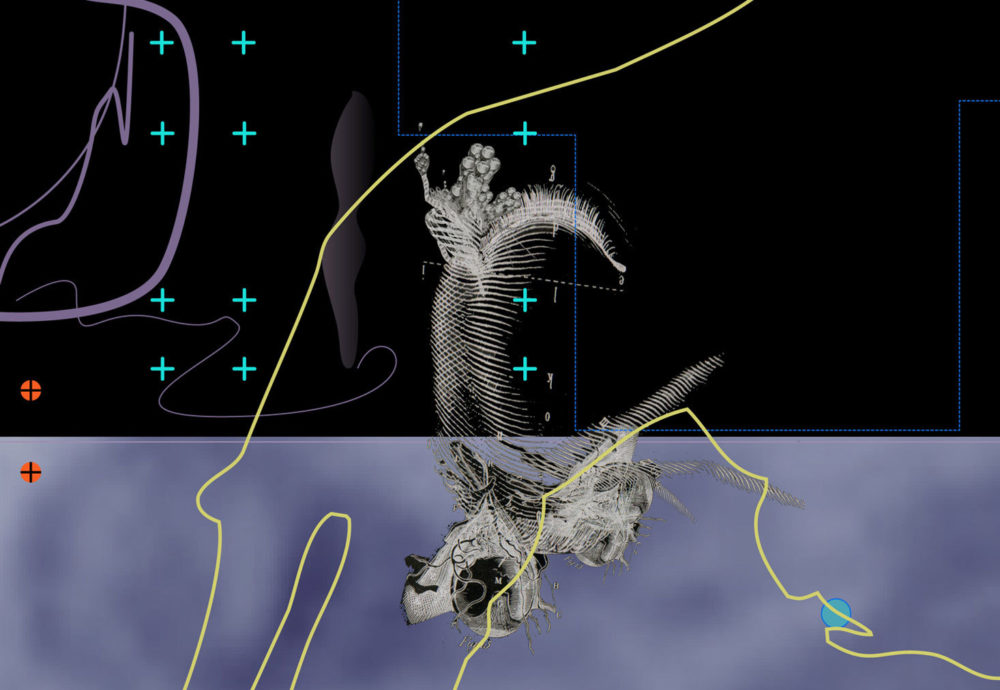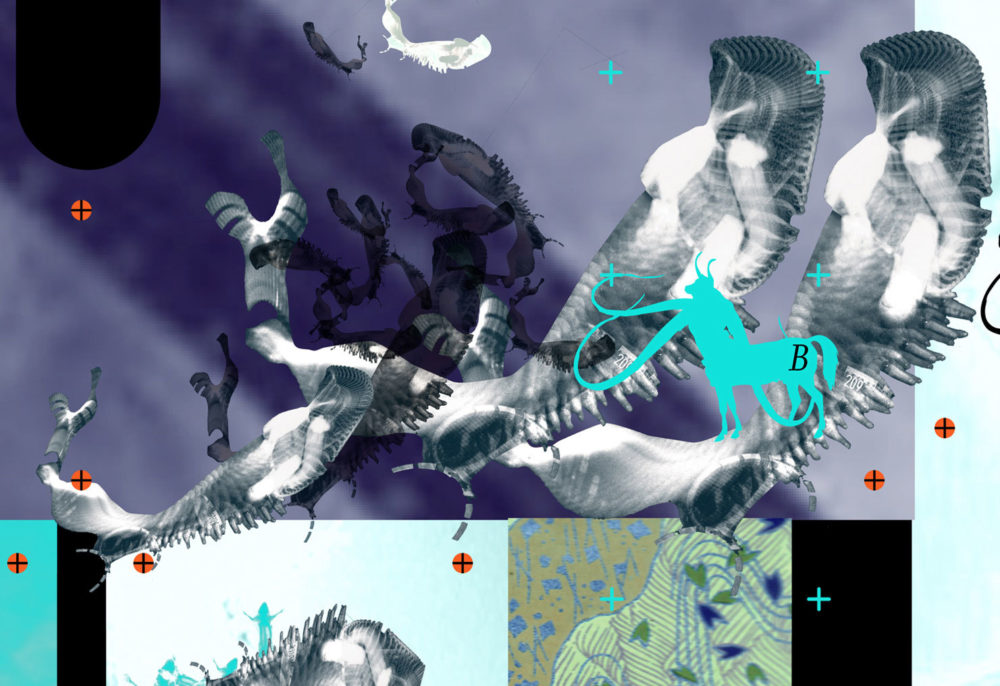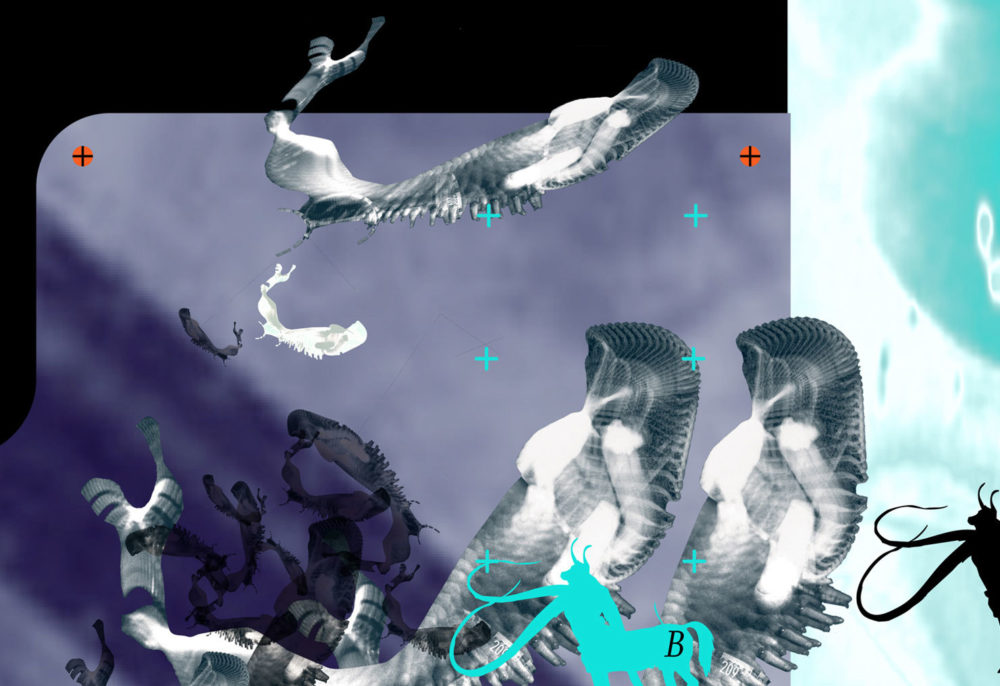The representational mediums, techniques, and design methods architects conjure are approximate, indirect, and sometimes downright mischievous. Trading in tropes, metaphors, half-truths, and distortions, we pick the pockets of truth, acting like con artists, leveraging sleight of hand tactics, poking around for possible worlds in the act of design. Using languages and visual accomplices of all manner, architects are metaphorical Houdinis, escape artists, fictitious and duplicitous writers of spatial dreams, invoking imagined worlds riddled with a politics of communication on the lookout for architecture that advocates for real cultural agency.
Architects work in all kinds of ways—2d, 3d, and temporally charged visualizations, models, objects, and invented bits; in fact, never before has the range of techniques to drive design been so robust. However, the conventional use of language—words—for design purposes is largely antiquated. Proactively, words can initiate, trigger, and thicken spatial possibilities. The use of language can be an active form of representation and design. Arguably, reframing the naming problem, conjuring language prompts as programmatic and conceptual stimuli, and by triggering analogic relations through the use of words, we can actively augment the production of architecture toward greater cultural efficacy.
The Naming Problem
In the sciences, naming conventions establish easily recognized systems, producing ways to map, structure, and share knowledge. While naming can be useful, it can also be comfortingly deceitful in relation to what is possible spatially. Naming predicts familiar translation, precluding creative interpretation and underscoring default actions. Naming the architectural program, for example, trades on inherited expectations, reinforcing what is already known, solidifying categorical fixation, and establishing what’s in and what’s out.
For architects, the naming problem frequently hijacks the potential of architectural programs, preferring metrical definition, while protecting typological consistencies; in a way, naming “finishes” a project before it even starts. When asked to design a foyer, for example, the design outcome is already 70% complete without lifting a finger—or dropping the digits onto the keyboard—it’s about two stories high, the elevator and stair are over there and an information desk is just out of reach. Alternatively, if we relax naming conventions, we might open communicative spatial potential, thickening the pool of resources from which the production of architecture might emanate.
Language Prompts, Programmatic Openings
To be more effective cultural protagonists in a world of rapid economic, demographic, and technologic changes, architects could think about conventional program wisdom differently. Just shifting naming from “program” to “programmatic thinking” opens possibilities. Might the use of language, words coupled and entangled, change or exceed program typologies? This would vindicate the naming problem and “unfinish” the design, perhaps even supporting more poignant cultural agency through architectural production.
I’m interested in linguistically generating ways to frame programmatic thinking. In the David’s Island proposal, for example, I imagined programmatic framing to structure the spatialization of the primary interests of the proposal, discovering the design brief in the process, while imagining these programmatic catalysts: landings for mythical sea travelers; an axis of mutiny; camouflagic surfaces; a landing vessel; labyrinths of emptiness or, alternatively, air turbulence fields; moving and mis-coordinated landscapes; a machinic surveillance field; erosion surfaces; polished metamorphic rock gardens; a ballasted space; an attractive shell surface; easement fencing; a multiplied officer’s headquarters; bird colony lines; photo ops; and panoramic steel walls and no fly zones.
In the Central California History Museum competition, several programmatic elements included migrating floral robotic gardens; harvesting surfaces; atmospheres for enigmatic nocturnal objects; electronic marionettes; tractors square dancing; and a theater of the muses. These augmented the required program elements, while structuring the key interests of the project. For a collaborative international book project, Passport, (thematically framed through the lens of documenting urbanism), I visually framed “alchemic urbanism” motivated by harvesting surplus urban material with a twist: over-coded and erased gold-leafed residuals; soft orange metro blooms waiting; shadowed evasive speeds; milled surplus data; documenting bleached-out blue networks; trapped marble glances; extracting compressed cyclical rhythms; and tracing fabricated acrid velocities. And in the Spatial Blooms design by research work, I visualized verdant programs such as: fallow surfaces; knotted thresholds; germinal objects; fabric predators; test-tube berms; and zipper blooms—all subject to change at the flip of a phase shift, bifurcating sporadically.
In each of these cases, the use of words or phrases established a form of representation that challenged conventions for programmatic thinking, while generating and structuring many of the key interests, or ideas for the proposals, offering potential relational grist for design consideration.
Generative Language, Conceptual Triggers
In a different sense, I am committed to opening what is conceptually possible where the liberated and even promiscuous and paradoxical use of language has been productive.
In some lightly finished projects, real speed demons, I have framed the following conceptual catalysts: architecture that is temporally active, behaving like a quick-change artist—something spatially akin to the mild-mannered Clark Kent in the morning, Superman in the afternoon; spatial ventriloquism, material speaking from one mouth, but seemingly arriving spatially out of nowhere; architecture that makes, erases, and remakes itself, while changing land values and zoning regulations on the run; the use literary terms—aphorisms, metaphors, similes, and alliteration, analogously to conceive construction logics for architecture; building the plan here and the section over there; duplicating a domestic interior, sending the clone into the neighborhood to co-mingle with other domestic environs; architecture that occupies 1572 Venice, 1968 Paris, and 2020 “somewhere,” simultaneously; and developing software that could embroider metaphorical twists, computational mutants, historical reference, and psychological whims, spatially, without batting an eye.
Here, word prompts keep the spatial imagination alive, conjuring “what ifs” through a creative combination of words to speculate on what might be spatially possible.
Analogic Relations Prompted Through Language
In the Fast Twitch desert dwelling project, formal and material attitudes were motivated using analogs—pre-spatial language prompts deployed to imagine architectural possibilities. Parts of the dwelling are like paired cuckoo clocks; storage sacks and petticoats; an empty game board; wind throats; an oscillating and vibrating occupant; and a permanent rhetorical shadow. And, in the Central California History Museum project, the use of analogical references for design inspiration included Japanese kosode; natural history dioramas; medical operating theaters; and the infamous Trojan horse. The Metaspheric Zoo (a cross between metaphor and atmosphere) strategic thematic image for the Prague International Biennale of Contemporary Art imagined that experiences would be triggered by analogically structuring tendencies of animality including: territorialization, behavioral traits, and species interrelations through new material and durational assemblies.
In this case, the use of analogic prompts enables a designer’s form, material, and operational vocabulary to enlarge 100-fold by triggering sources in the architect’s relational grasp, but outside the deliverable capacities of one’s design limitations.
The Last Word
In his introduction, “Perry Kulper’s Imaginarium AS Darwin’s Omission,” for an exhibition of my drawings at RPI in the fall of 2010, Thomas Mical said:
“The difficulty of the creation of an imaginary world is not the demands of an integrated overall structure of appearances. Nor is it in the conjuring act of a foundational synthetic smooth space of an imaginary world. The difficult challenge of world making is always in the more subtle tissue of the minor slips, distortions, elisions, and unobserved disappearances that are commonplace in the everyday world. To make a substitute world that exceeds the domain of the real, one must focus on the figuration of such diverse liminal phenomena and minimal differences that give a signature grain or texture to the imaginary. In short, the power of the imaginarium is in direct relation to the presence of its contaminations.”
If Mical’s assertions are partially true, then it might be that the architect operates in the minor slips, distortions, and elisions of a world, both spatially and representationally. The imaginative use of language might help perpetuate and even transform accepted norms, leaning into the equations of falsehood, deceit, multiple fictions, and, who knows, even plural truths. This kind of thinking might enable architecture to effectively engage an emergent socially, politically, and economically changing public toward increased cultural durability.
Finally, picking the pocket of friend and colleague Tom Buresh in a letter of support:
“In closing, it seems appropriate to give Caterpillar, Alice, and the Duchess, the last word,
Caterpillar: Who are YOU?
Alice: This was not an encouraging opening for a conversation. I—I hardly know, sir, just at present—at least I know who I was when I got up this morning, but I think I must have been changed several times since then.
The Duchess: I quite agree with you. And the moral of that is, be what you would seem to be, or if you'd like it put more simply, never imagine yourself not to be otherwise than what it might appear to others that what you were or might have been was not otherwise than what you had been would have appeared to them to be otherwise.”
Perry Kulper is an architect and associate professor of architecture at the University of Michigan. Prior to his arrival at the University of Michigan he was a SCI-Arc faculty member for 16 years. His interests include the roles of representation and methodologies in the production of architecture and in broadening the conceptual range by which architecture contributes to our cultural imagination. Perry is the co-author of Pamphlet Architecture 34: Fathoming the Unfathomable.
